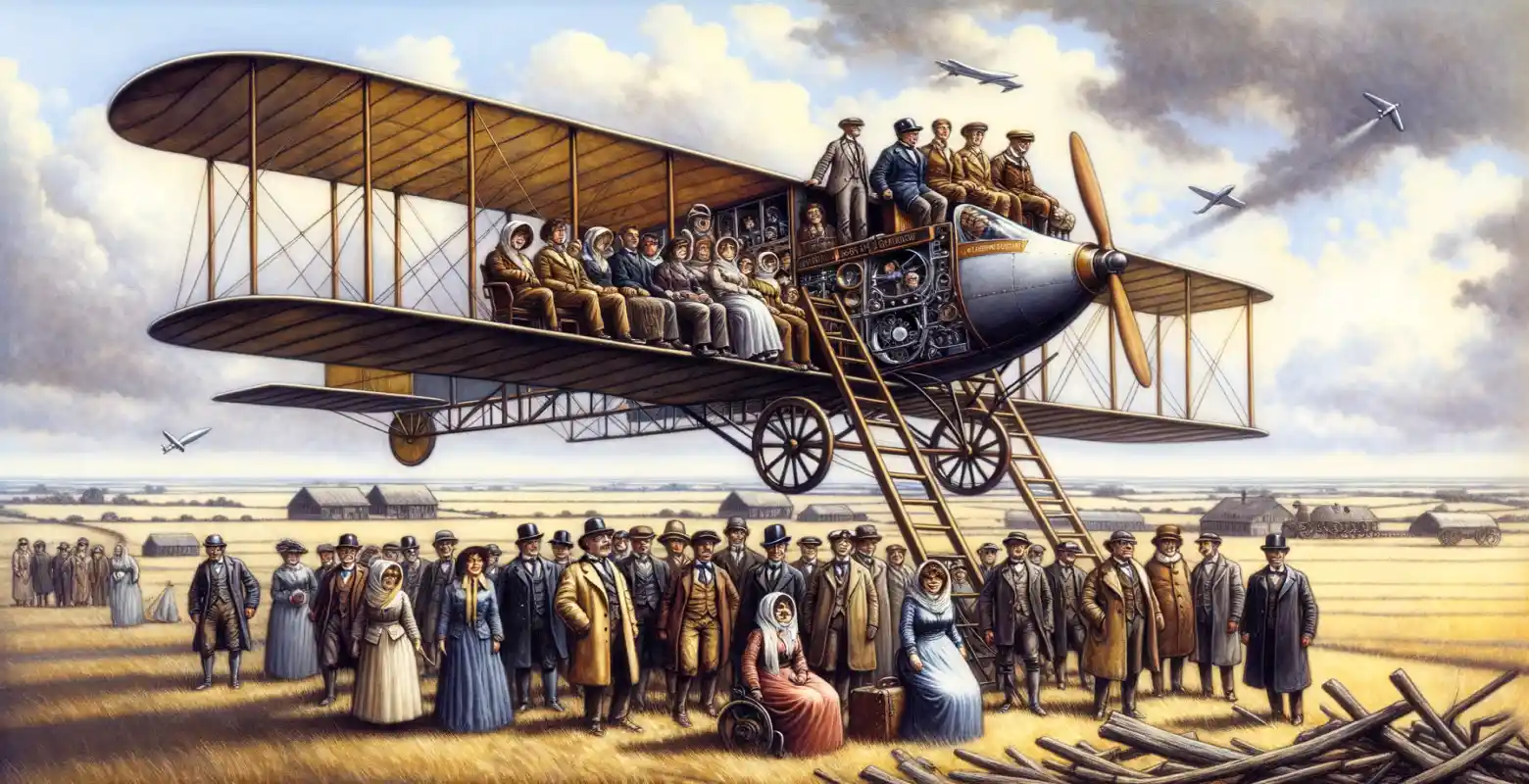The history of the first passenger flight - how did it all begin?
Introduction
The history of passenger aviation is a fascinating topic that tells a story of human ambition and the desire to push boundaries. From the earliest attempts to soar into the skies to modern passenger airplanes covering thousands of kilometers in just a few hours, aviation has come a long way. In today's world, where air travel is part of everyday life, it is worth reminding ourselves how it all began. Why is the first passenger flight so important? It marked the beginning of a new era in communication and international travel, influencing economies, societies, and cultures worldwide. In this article, we will trace the history of the first passenger flight, delving into the details and context that led to it.
Beginnings of Aviation – Dreams of Flying
Flying has been a dream of humanity for centuries. Ancient civilizations already dreamed of flights in the skies, which found expression in myths and legends, such as the story of Icarus. However, true technological progress in this field began in the 19th century. The first attempts to construct flying machines were made by inventors such as Otto Lilienthal, who experimented with gliders, or the Wright brothers, who built the first airplane with a combustion engine. Their success in 1903 in Kitty Hawk, North Carolina, was groundbreaking, but did not yet involve passenger flights.
First Passenger Flight – Milestone in Aviation History
The first passenger flight took place on January 1, 1914, and is considered a milestone in the history of commercial aviation. This flight was organized by the St. Petersburg-Tampa Airboat Line in Florida, USA. The aircraft used was the Benoist XIV biplane, piloted by Tony Jannus, with Abram C. Pheil, a former mayor of St. Petersburg, as the first passenger. The flight lasted about 23 minutes and covered a distance of 34 kilometers over Tampa Bay.
Technical Aspects of the First Flight
The Benoist XIV biplane was a relatively simple design, equipped with a 6-cylinder, 75-horsepower Roberts engine. This aircraft could only accommodate one passenger, which seems unthinkable in today's terms, but it was a real breakthrough at that time. Its construction was based on a wooden frame covered with fabric, typical for aviation of those years.
Challenges and Successes of Early Passenger Flights
Despite the success of the first passenger flight, the early years of commercial aviation were full of challenges. Technical problems, lack of infrastructure, and technological limitations were significant barriers. However, thanks to the determination and vision of aviation pioneers like Tony Jannus and other personalities of that period, commercial passenger flights began to develop. Shortly after the first flight, the St. Petersburg-Tampa Airboat Line started regular flights, transporting passengers across Tampa Bay.
Development of Passenger Aviation in the 20th Century
After the first passenger flight, the development of aviation accelerated significantly. In the 1920s and 1930s, the first international airlines began to emerge, such as KLM, Lufthansa, or Pan American World Airways. The introduction of larger and more technologically advanced aircraft, such as the DC-3, enabled the transportation of a greater number of passengers over longer distances. Civil aviation became increasingly accessible, and air travel began to be seen as a modern and fast form of transportation.
Contemporary Passenger Aviation – Achievements and Challenges
Today, passenger aviation is one of the most important transportation sectors globally. Aircraft such as the Boeing 747 or Airbus A380 can carry hundreds of passengers on international routes, connecting continents in just a few hours. Nevertheless, contemporary aviation faces serious challenges, such as rising fuel costs, security issues, and increasing pressure to reduce greenhouse gas emissions. The aviation industry must address these challenges while continuing to innovate and develop technologically.
Conclusion
The history of the first passenger flight shows how far we have come in the field of aviation since then. From a small biplane carrying one passenger over Tampa Bay, we have developed a global air network that connects people and cultures worldwide. Although aviation faces new challenges, its role in global communication and economy is invaluable. Understanding the history of the first passenger flight allows us to appreciate the progress made over the past century and inspires further development and innovation in this key field.






Number of comments: 0